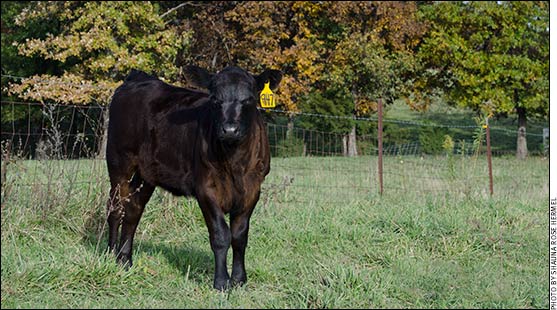
Nutritional Considerations for
Fall-calving Herds
The type and availability of feed resources you have may influence how fall calving can fit for you.
When is fall calving? As we talk to producers in Iowa, it seems some consider the fall-calving season to occur from Aug. 15-Oct. 31, while others assume Sept. 15-Nov. 1 is the right time frame. Hopefully, adding a fall-calving group is not just moving to a “continuous” calving season; this needs to be a separate management group.
Regardless of what time period constitutes fall calving, it is safe to say that it’s being implemented by more producers, particularly in the fescue region of the Cornbelt. Fall-calving beef cows usually can perform very well grazing summer fescue pastures during gestation; however, spring-calving cows grazing the same pasture while lactating and attempting to rebreed may experience difficulties.
University trials and producer testimonials support how changing the calving season can be a strategy to improve production output when utilizing endophyte-infested fescue pastures. However, altering the calving season will directly impact nutritional requirements at a given time of the year. These differences in stage of production are critical to consider as you evaluate the seasonal feed requirements of fall-calving cows. In addition, when the cows calve relative to extremes in temperature will affect winter nutritional needs.
The type and availability of feed resources you have may influence how fall calving can fit for you. In the middle of winter, lactating beef cows require 10% more energy per pound of diet, and 7% more crude protein, compared to dry cows in the last one-third of pregnancy during the same time of the year.
If you are relying on grazing pairs on low-quality forages (such as cornstalks) in the winter with little supplementation, it may be difficult to meet requirements of the cow and calf. However, if you can stockpile high-quality forages (fescue/red clover), it is possible that these increased nutritional requirements can be met by pasture for most of the winter. As always, forage testing and ration analysis are critical.
If you can wean calves prior to the extreme weather, it will greatly reduce the feed requirements for the cow. We will talk more about early weaning in a future article, but removing the calves can allow the mature cows to regain weight on poorer-quality roughages. Dry cows in early pregnancy will need diets with 14.5% less protein per pound of ration, and 21% less energy compared to mama cows with calves at side.
As you evaluate your calving system decisions and ration choices, contact your local extension beef specialist to develop rations that fit your operation.

Editor’s Note: Patrick Gunn and Joe Sellers are extension specialists with Iowa State University. This article is the second in the three-part series “Fall Calving in the Cornbelt” presented by the Iowa Beef Center.






